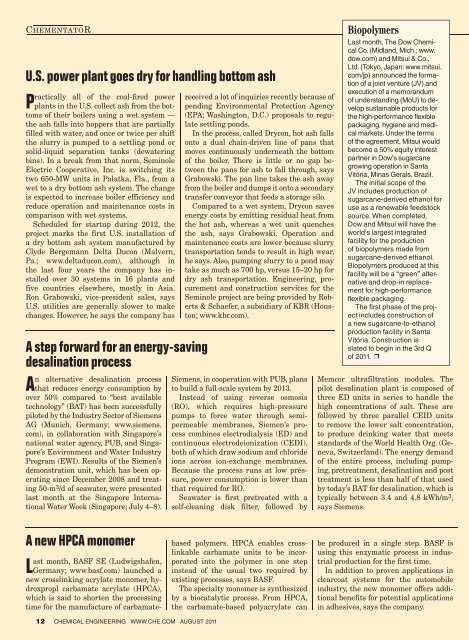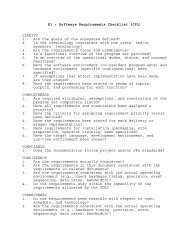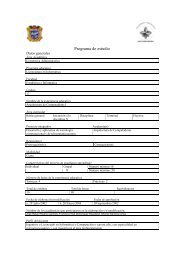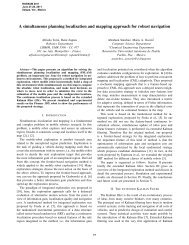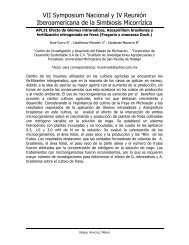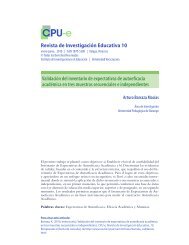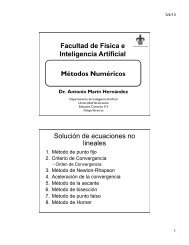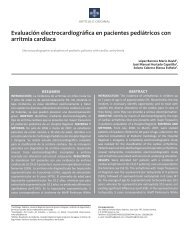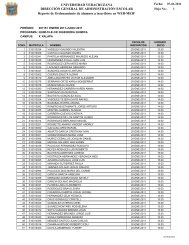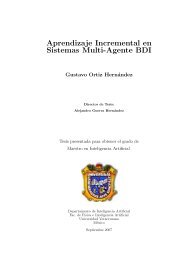Understanding the Software Options
Understanding the Software Options
Understanding the Software Options
Create successful ePaper yourself
Turn your PDF publications into a flip-book with our unique Google optimized e-Paper software.
CHEMENTATOR<br />
U.S. power plant goes dry for handling bottom ash<br />
Practically all of <strong>the</strong> coal-fired power<br />
plants in <strong>the</strong> U.S. collect ash from <strong>the</strong> bottoms<br />
of <strong>the</strong>ir boilers using a wet system —<br />
<strong>the</strong> ash falls into hoppers that are partially<br />
filled with water, and once or twice per shift<br />
<strong>the</strong> slurry is pumped to a settling pond or<br />
solid-liquid separation tanks (dewatering<br />
bins). In a break from that norm, Seminole<br />
Electric Cooperative, Inc. is switching its<br />
two 650-MW units in Palatka, Fla., from a<br />
wet to a dry bottom ash system. The change<br />
is expected to increase boiler efficiency and<br />
reduce operation and maintenance costs in<br />
comparison with wet systems.<br />
Scheduled for startup during 2012, <strong>the</strong><br />
project marks <strong>the</strong> first U.S. installation of<br />
a dry bottom ash system manufactured by<br />
Clyde Bergemann Delta Ducon (Malvern,<br />
Pa.; www.deltaducon.com), although in<br />
<strong>the</strong> last four years <strong>the</strong> company has installed<br />
over 30 systems in 16 plants and<br />
five countries elsewhere, mostly in Asia.<br />
Ron Grabowski, vice-president sales, says<br />
U.S. utilities are generally slower to make<br />
changes. However, he says <strong>the</strong> company has<br />
A step forward for an energy-saving<br />
desalination process<br />
An alternative desalination process<br />
that reduces energy consumption by<br />
over 50% compared to “best available<br />
technology” (BAT) has been successfully<br />
piloted by <strong>the</strong> Industry Sector of Siemens<br />
AG (Munich, Germany; www.siemens.<br />
com), in collaboration with Singapore’s<br />
national water agency, PUB, and Singapore’s<br />
Environment and Water Industry<br />
Program (EWI). Results of <strong>the</strong> Siemen’s<br />
demonstration unit, which has been operating<br />
since December 2008 and treating<br />
50-m3 /d of seawater, were presented<br />
last month at <strong>the</strong> Singapore International<br />
Water Week (Singapore; July 4–8).<br />
A new HPCA monomer<br />
Last month, BASF SE (Ludwigshafen,<br />
Germany; www.basf.com) launched a<br />
new crosslinking acrylate monomer, hydroxpropl<br />
carbamate acrylate (HPCA),<br />
which is said to shorten <strong>the</strong> processing<br />
time for <strong>the</strong> manufacture of carbamate-<br />
12 CHEMICAL ENGINEERING WWW.CHE.COM AUGUST 2011<br />
received a lot of inquiries recently because of<br />
pending Environmental Protection Agency<br />
(EPA; Washington, D.C.) proposals to regulate<br />
settling ponds.<br />
In <strong>the</strong> process, called Drycon, hot ash falls<br />
onto a dual chain-driven line of pans that<br />
moves continuously underneath <strong>the</strong> bottom<br />
of <strong>the</strong> boiler. There is little or no gap between<br />
<strong>the</strong> pans for ash to fall through, says<br />
Grabowski. The pan line takes <strong>the</strong> ash away<br />
from <strong>the</strong> boiler and dumps it onto a secondary<br />
transfer conveyor that feeds a storage silo.<br />
Compared to a wet system, Drycon saves<br />
energy costs by emitting residual heat from<br />
<strong>the</strong> hot ash, whereas a wet unit quenches<br />
<strong>the</strong> ash, says Grabowski. Operation and<br />
maintenance costs are lower because slurry<br />
transportation tends to result in high wear,<br />
he says. Also, pumping slurry to a pond may<br />
take as much as 700 hp, versus 15–20 hp for<br />
dry ash transportation. Engineering, procurement<br />
and construction services for <strong>the</strong><br />
Seminole project are being provided by Roberts<br />
& Schaefer, a subsidiary of KBR (Houston;<br />
www.kbr.com).<br />
Siemens, in cooperation with PUB, plans<br />
to build a full-scale system by 2013.<br />
Instead of using reverse osmosis<br />
(RO), which requires high-pressure<br />
pumps to force water through semipermeable<br />
membranes, Siemen’s process<br />
combines electrodialysis (ED) and<br />
continuous electrodeionization (CEDI),<br />
both of which draw sodium and chloride<br />
ions across ion-exchange membranes.<br />
Because <strong>the</strong> process runs at low pressure,<br />
power consumption is lower than<br />
that required for RO.<br />
Seawater is first pretreated with a<br />
self-cleaning disk filter, followed by<br />
based polymers. HPCA enables crosslinkable<br />
carbamate units to be incorporated<br />
into <strong>the</strong> polymer in one step<br />
instead of <strong>the</strong> usual two required by<br />
existing processes, says BASF.<br />
The specialty monomer is syn<strong>the</strong>sized<br />
by a biocatalytic process. From HPCA,<br />
<strong>the</strong> carbamate-based polyacrylate can<br />
Biopolymers<br />
Last month, The Dow Chemical<br />
Co. (Midland, Mich.; www.<br />
dow.com) and Mitsui & Co.,<br />
Ltd. (Tokyo, Japan: www.mitsui.<br />
com/jp) announced <strong>the</strong> formation<br />
of a joint venture (JV) and<br />
execution of a memorandum<br />
of understanding (MoU) to develop<br />
sustainable products for<br />
<strong>the</strong> high-performance �exible<br />
packaging, hygiene and medical<br />
markets. Under <strong>the</strong> terms<br />
of <strong>the</strong> agreement, Mitsui would<br />
become a 50% equity interest<br />
partner in Dow’s sugarcane<br />
growing operation in Santa<br />
Vitória, Minas Gerais, Brazil.<br />
The initial scope of <strong>the</strong><br />
JV includes production of<br />
sugarcane-derived ethanol for<br />
use as a renewable feedstock<br />
source. When completed,<br />
Dow and Mitsui will have <strong>the</strong><br />
world’s largest integrated<br />
facility for <strong>the</strong> production<br />
of biopolymers made from<br />
sugarcane-derived ethanol.<br />
Biopolymers produced at this<br />
facility will be a “green” alternative<br />
and drop-in replacement<br />
for high-performance<br />
�exible packaging.<br />
The �rst phase of <strong>the</strong> project<br />
includes construction of<br />
a new sugarcane-to-ethanol<br />
production facility in Santa<br />
Vitória. Construction is<br />
slated to begin in <strong>the</strong> 3rd Q<br />
of 2011. ❐<br />
Memcor ultrafiltration modules. The<br />
pilot desalination plant is composed of<br />
three ED units in series to handle <strong>the</strong><br />
high concentrations of salt. These are<br />
followed by three parallel CEID units<br />
to remove <strong>the</strong> lower salt concentration,<br />
to produce drinking water that meets<br />
standards of <strong>the</strong> World Health Org. (Geneva,<br />
Switzerland). The energy demand<br />
of <strong>the</strong> entire process, including pumping,<br />
pretreatment, desalination and post<br />
treatment is less than half of that used<br />
by today’s BAT for desalination, which is<br />
typically between 3.4 and 4.8 kWh/m 3,<br />
says Siemens.<br />
be produced in a single step. BASF is<br />
using this enzymatic process in industrial<br />
production for <strong>the</strong> first time.<br />
In addition to proven applications in<br />
clearcoat systems for <strong>the</strong> automobile<br />
industry, <strong>the</strong> new monomer offers additional<br />
benefits for potential applications<br />
in adhesives, says <strong>the</strong> company.


